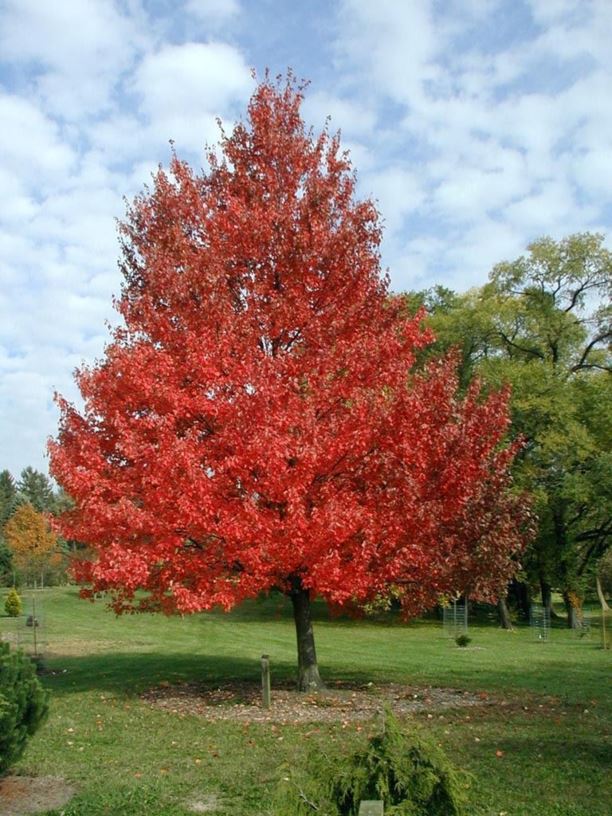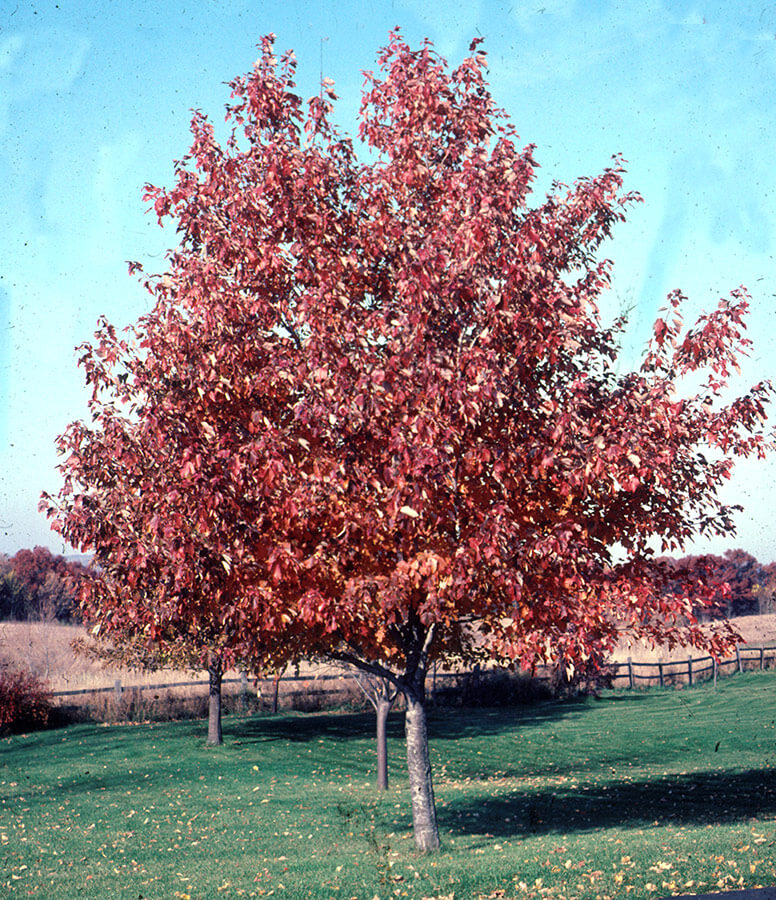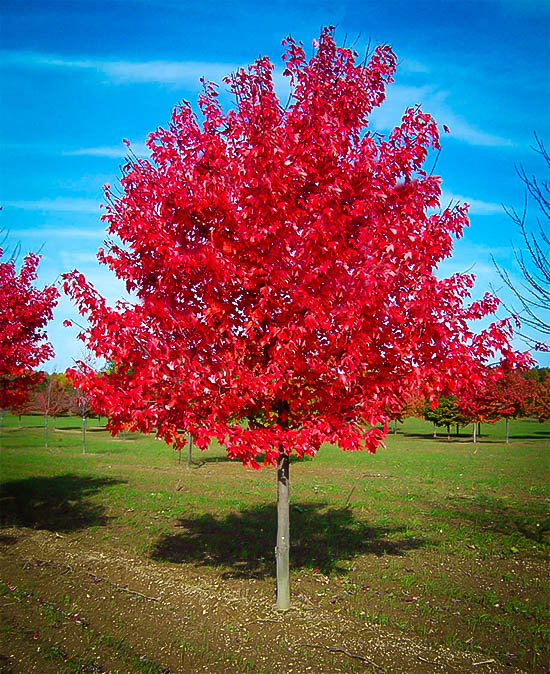

#Red sunset red maple full#
It also makes a great screen along the boundary or road edge, and a row of these trees in full color is a spectacular sight not easily forgotten. In summer the leaves are a very attractive glossy green, and this is an ideal specimen tree for a lawn, or for planting in prominent parts of your property. It has a spread of 30 to 40 feet, with a full, rounded crown. The Red Sunset Red Maple is a large shade tree that will grow 45 feet tall, and even a few feet more.

Not only that, this is a tree that gives reliable color even in hot areas, where other trees don’t color well. It was chosen from thousands of seedlings for its outstanding deep reds and oranges, more spectacular and reliable than any other variety of this tree. The Red Sunset Red Maple is just such a tree. If you want reliable color, it is best to grow a named tree, reproduced from an original parent tree that was selected for its outstanding color. This is because each tree is an individual, and it colors differently. However, if you grow just a common Red Maple, your tree may not always be so colorful. The Red Maple really lives up to its name, and is a flaming beacon among the softer fall colors of other trees. Plant Hardinessįall color is a definite highlight of the year, and everyone loves trees in red and orange perhaps more than any other colors. For the very best fall colors of any shade tree, this is the tree to pick. It has no significant pests or diseases and its beautiful leaves are a striking glossy green – until they blaze into the fall season in a bonfire of color. It grows well everywhere but southern Florida and southern California, so you can’t go wrong with this choice. If you do not have the moist conditions red maple loves, then this is the variety to grow. Plant the Red Sunset Red Maple in any ordinary soil. Grows almost anywhere – from Canada to Florida.More heat and drought resistant than other forms.Grows very rapidly into a full-size shade tree.Dynamic red and orange shades lighten up the fall.Best fall colors of any red maple variety.Plant it as a shade tree, as a background specimen in a larger garden, or as a beautiful row along the edge of your property. It will soon turn from a healthy young tree into a magnificent addition to your property. A handsome shade tree, it grows 40 to 50 feet tall, and up to 40 feet across, making a magnificent specimen very quickly, since it grows up to 3 feet a year. This is also the best variety for hot and dry locations, because it is much more drought resistant than any other red maple. Not only are its fall colors of red and orange outstanding, they develop almost two weeks before other varieties, yet they stay on the tree for weeks. The Red Sunset® Red Maple has been specially selected from among thousands of seedlings to be the best red maple available. We've gotta protect good ole' Mother Nature, after all.

While we wish we could serve everyone, it's for the safety of native species and helps prevent the spread of invasive disease & pests. The short & sweet answer is: "United States Department of Agriculture Restrictions." Every state has their own unique USDA restrictions on which plants they allow to come into their state. You will receive email notifications along the way on the progress of your order, as well as tracking information to track your plants all the way to their new home! Why are some states excluded from shipping? Orders typically ship out within 2 business days. How does the delivery process work?Īll of our orders ship via FedEx Ground! Once your order is placed online, our magic elves get right to work picking, staging, boxing and shipping your trees. You'll find we carry young 1-gallons, up to more mature 7-gallons ranging anywhere from 6 inches to 6ft. While the industry-standard terminology is to call the sizes "Gallon Containers", that doesn't exactly translate to the traditional liquid "gallon" size we think of. Nursery containers come in a variety of different sizes, and old-school nursery slang has stuck. All tree, and nothin' but the tree! We measure from the top of the soil to the top of the tree the height of the container or the root system is never included in our measurements.


 0 kommentar(er)
0 kommentar(er)
